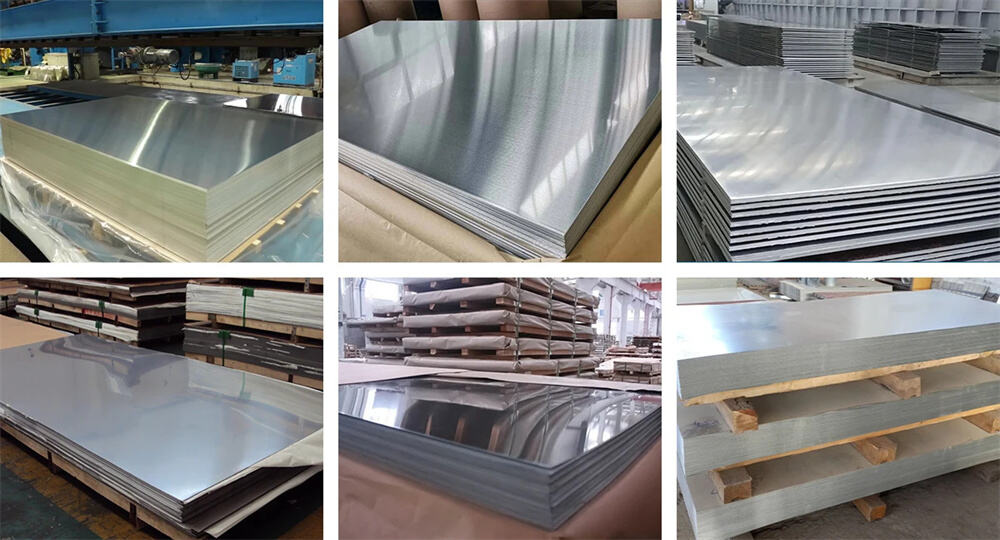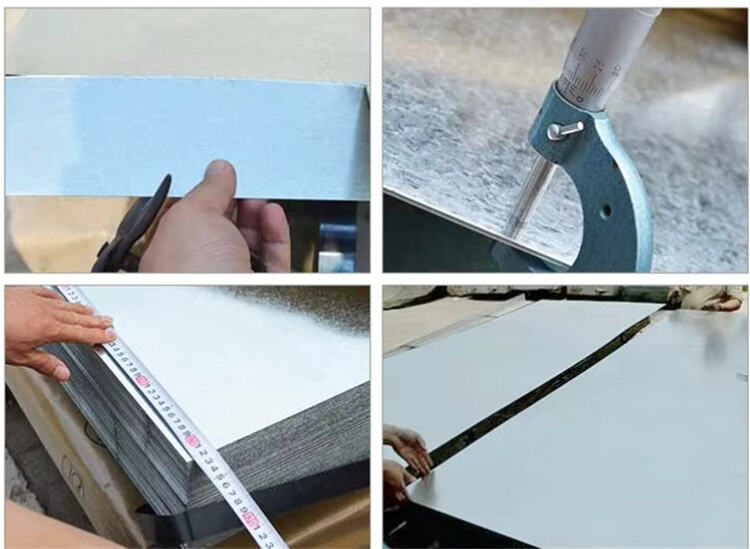316 stainless steel plate and 316L stainless steel plate are both important types of austenitic stainless steel and are very common in many industrial and commercial applications. Although their composition and performance are very similar, there are still some important differences. Next, let's take a look at the differences!

What Is 316 Stainless Steel Plate?
316 stainless steel sheet is an austenitic stainless steel with excellent corrosion resistance. Molybdenum is added to 316 stainless steel, which makes it perform better in high temperature and corrosive environments.
What Is 316L Stainless Steel Plate?
316L stainless steel sheet is a low-carbon version of 316 stainless steel plate. L means low carbon. Its carbon content does not exceed 0.03%. 316L stainless steel plate is used to avoid the precipitation of carbides during welding, thereby enhancing its corrosion resistance.
What Is The Difference Between 316 Stainless Steel Plate And 316L Stainless Steel Plate?
1. Chemical Composition:
The main difference between 316 ss plate and 316L ss plate is that it has a lower carbon content, which is only 0.03% at most. The contents of other components such as chromium, nickel and molybdenum are basically the same as those of 316L stainless steel plates.
|
Grade
|
C
|
Mn
|
Si
|
P
|
S
|
Cr
|
Mo
|
Ni
|
N
|
|
316
|
≤0.08
|
≤2.0
|
≤0.75
|
≤0.045
|
≤0.03
|
16.0-18.0
|
2.0-3.0
|
10.0-14.0
|
≤0.10
|
|
316L
|
≤0.03
|
≤2.0
|
≤0.75
|
≤0.045
|
≤0.03
|
16.0-18.0
|
2.0-3.0
|
10.0-14.0
|
≤0.10
|
2. Corrosion Resistance:
Both 316 and 316L stainless steel plates have excellent corrosion resistance, but 316L performs better under certain specific conditions.
 316 stainless steel plate: performs well in many chemical and industrial environments, especially in environments containing chlorides, such as seawater or salty environments. However, during high-temperature welding, carbides may precipitate at the grain boundaries, reducing its corrosion resistance.
316 stainless steel plate: performs well in many chemical and industrial environments, especially in environments containing chlorides, such as seawater or salty environments. However, during high-temperature welding, carbides may precipitate at the grain boundaries, reducing its corrosion resistance.
 316L stainless steel plate: Due to its lower carbon content, carbide precipitation is reduced after high-temperature welding, reducing the risk of intergranular corrosion, thereby improving corrosion resistance at the welded joint. This makes 316L perform better in some extremely corrosive environments, such as pharmaceutical and food processing equipment.
316L stainless steel plate: Due to its lower carbon content, carbide precipitation is reduced after high-temperature welding, reducing the risk of intergranular corrosion, thereby improving corrosion resistance at the welded joint. This makes 316L perform better in some extremely corrosive environments, such as pharmaceutical and food processing equipment.
3. Welding Performance:
Welding performance is an important consideration when selecting stainless steel plates, especially when a large amount of welding is required during the manufacturing process.
 316 ss plate: has good welding performance and can use most standard welding methods. However, due to the high carbon content, intergranular corrosion problems may occur during high-temperature welding, especially in the weld area.
316 ss plate: has good welding performance and can use most standard welding methods. However, due to the high carbon content, intergranular corrosion problems may occur during high-temperature welding, especially in the weld area.
 316L ss plate: Due to its low carbon content, it is less likely to produce carbide precipitation during welding, and the welding performance is better. This makes 316L more suitable for applications that require frequent welding or complex welded structures.
316L ss plate: Due to its low carbon content, it is less likely to produce carbide precipitation during welding, and the welding performance is better. This makes 316L more suitable for applications that require frequent welding or complex welded structures.
4. Mechanical Properties:
316 and 316L stainless steel plates are very similar in mechanical properties, both have excellent strength and toughness.
 ss 316 plate: It has high strength and toughness, and maintains good mechanical properties in the temperature range of -196°C to 800°C.
ss 316 plate: It has high strength and toughness, and maintains good mechanical properties in the temperature range of -196°C to 800°C.
 ss 316L plate: Despite its lower carbon content, its mechanical properties are almost the same as 316 stainless steel, and it still maintains good strength and toughness at extremely low and high temperatures.
ss 316L plate: Despite its lower carbon content, its mechanical properties are almost the same as 316 stainless steel, and it still maintains good strength and toughness at extremely low and high temperatures.
5.Heat Treatment Effect:
Heat treatment has a significant effect on the performance of stainless steel plates, and proper heat treatment can improve its mechanical properties and corrosion resistance. 316 stainless steel plate and 316L stainless steel plate usually do not require heat treatment to enhance their hardness or strength because they already have good mechanical properties at room temperature.
 316 ss sheet: usually no heat treatment is required to achieve excellent performance, but solution treatment may be required in some applications to improve corrosion resistance.
316 ss sheet: usually no heat treatment is required to achieve excellent performance, but solution treatment may be required in some applications to improve corrosion resistance.
 316L ss sheet: due to its low carbon content, special heat treatment is usually not required. Even after welding, it is not easy to produce carbide precipitation.
316L ss sheet: due to its low carbon content, special heat treatment is usually not required. Even after welding, it is not easy to produce carbide precipitation.
6. Application Areas:
 316 stainless steel plate is often used in environments that require higher strength and corrosion resistance, such as:
316 stainless steel plate is often used in environments that require higher strength and corrosion resistance, such as:
- Chemical equipment: corrosion resistance makes it suitable for the manufacture of chemical reaction vessels, storage tanks, pipelines, etc.
- Marine equipment: strong resistance to chloride corrosion, suitable for seawater desalination equipment, ship parts, etc.
- Food industry: not easy to rust and contaminate food, suitable for food processing equipment, beverage production lines, etc.
 316L stainless steel plate is often used to make equipment that requires welding due to its better resistance to welding corrosion and intergranular corrosion, such as:
316L stainless steel plate is often used to make equipment that requires welding due to its better resistance to welding corrosion and intergranular corrosion, such as:
- Medical equipment: low carbon content reduces welding corrosion, suitable for surgical tools, implants, etc.
- Pharmaceutical equipment: high corrosion resistance and cleanliness, suitable for pharmaceutical equipment, reactors, etc.
- Food processing equipment: Suitable for high-demand sanitary equipment such as food processing machines, storage tanks, etc.
7. Cost:
 316 stainless steel plate: Usually slightly cheaper than 316L stainless steel, but the price difference is not large, depending on the market and supply conditions.
316 stainless steel plate: Usually slightly cheaper than 316L stainless steel, but the price difference is not large, depending on the market and supply conditions.
 316L stainless steel plate: Due to its low carbon content and better corrosion resistance, it is usually slightly more expensive than 316 stainless steel.
316L stainless steel plate: Due to its low carbon content and better corrosion resistance, it is usually slightly more expensive than 316 stainless steel.

316 and 316L stainless steel plates are very similar in many aspects, but the slight difference in their chemical composition significantly affects their performance and application areas. 316L stainless steel plate performs better in welding performance and corrosion resistance due to its low carbon content. When choosing the right material, it is necessary to consider the specific engineering requirements and environmental conditions comprehensively.
If you want to know more about stainless steel plate/pipe, please contact us!
 +86 17611015797 (WhatsApp )
+86 17611015797 (WhatsApp )
 info@steelgroups.com
info@steelgroups.com
